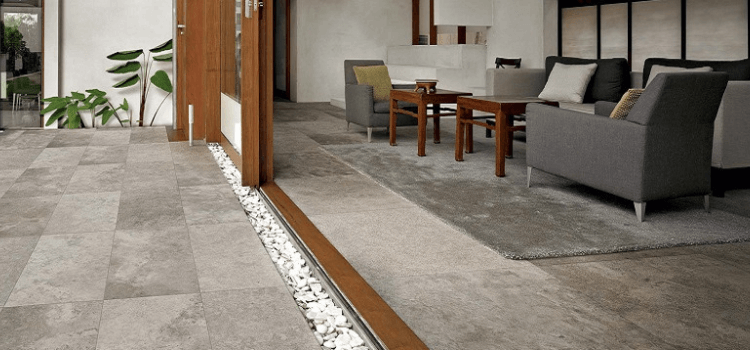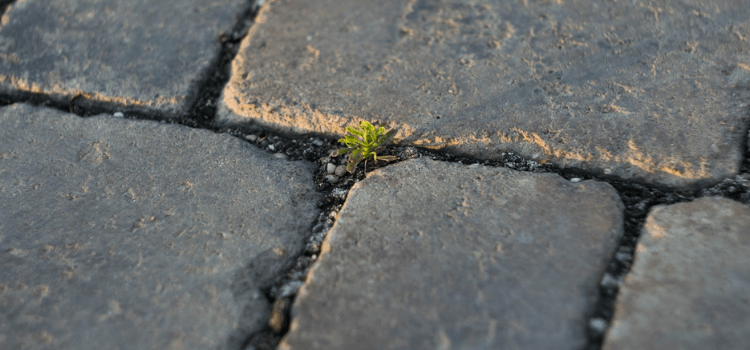Exploring the best patio flooring options for your outdoor oasis
Each material has its own set of advantages and drawbacks, making it essential to carefully weigh your choices based on your preferences, budget, and long-term considerations, especially regarding potential returns on investment when selling your property.
Here, we'll delve into four popular patio flooring options to help you make an informed decision.
Article Summary
- Natural Stone Flooring
- Reconstituted Stone Flooring
- Charming Clay Brick Flooring
- Versatile Concrete & Clay Pavers

1. Natural Stone Flooring
Natural stones come in various varieties, each offering a unique blend of durability and beauty. Options range from small cobbles to large flagstones, with popular choices including marble and travertine. While natural stones exude elegance, they may not be suitable for every home or landscaping design due to their cost. Slate and sandstone are alternative choices if you want to prioritise a less slippery surface when wet. The ease of installation and the natural aging process, which enhances their appearance over time, make natural stones an attractive option for adding value to your home.
2. Reconstituted Stone Flooring
Blending natural stone with concrete, reconstituted stone patio flooring provides a versatile option. Comprising crushed stone bound with acrylic resin, these stones can be moulded into various shapes and sizes, offering flexibility in design. The final appearance depends on the quality of materials used, and reconstituted stones provide the freedom to create decorative patterns. They are a cost-effective alternative to natural stones while offering long-lasting durability.

3. Charming Clay Brick Flooring
The use of clay bricks for patio flooring adds a touch of charm and warmth. Ideal for smaller patios, brick flooring can create an illusion of more space. With various textures and finishes available, clay bricks provide a beautiful finish when professionally installed by a bricklayer. Their fade-resistant, hard-wearing, and salt-resistant nature make them particularly suitable for homes near the beach or in sunny environments.
4. Versatile Concrete & Clay Pavers
For a versatile and practical choice, consider concrete and clay pavers. Available in different shapes, textures, and sizes, these materials offer numerous design options. While clay pavers provide a visually impressive surface with options like red hues, concrete pavers offer a more temperate look in shades such as buff and grey. Although they may lack the luxurious appeal of natural stones, concrete and clay pavers are long-lasting, hardwearing, and textured to ensure a non-slip surface.
In conclusion, with changing lifestyles and increased focus on home entertaining, investing in a well-designed outdoor patio is a great way to bring family and friends together. We've presented various patio flooring options to suit different tastes and budgets. Your choice of flooring serves as the foundation for your entertainment area, complementing elements like outdoor furniture, shade sails, and BBQ setups.
Consider not only your budget but also the desired functionality—whether you prioritise the visual splendour of marble or the durability of concrete and clay. Regardless of your decision, a thoughtfully chosen patio flooring design will undoubtedly enhance your outdoor living experience.
If you're ready to begin your backyard makeover, get in touch with local patio experts today.
Get free quotes in minutes.
Get quotes from our qualified and licensed tradies Australia-wide.
FAQs
1. What maintenance is required for each type of patio flooring?
Natural Stone Flooring: Natural stones are generally low-maintenance. Routine cleaning with a mild detergent and periodic resealing (for porous stones) are recommended to preserve their appearance. The aging process often enhances their aesthetic without extensive upkeep.
Reconstituted Stone Flooring: Reconstituted stone is relatively low-maintenance. Regular cleaning with a gentle cleanser is usually sufficient. The longevity of this flooring type reduces the need for frequent repairs or replacements.
Clay Brick Flooring: Clay bricks are durable and require minimal maintenance. Periodic sweeping and occasional washing are usually enough to keep them in good condition. Their fade-resistant nature ensures long-lasting colour vibrancy.
Concrete & Clay Pavers: Both concrete and clay pavers are practical and require little maintenance. Regular cleaning with a mild detergent and occasional resealing (for concrete pavers) can help maintain their appearance. Their hardwearing nature minimizes the need for extensive upkeep.
2. Which patio flooring options are best for different climates?
Natural Stone Flooring: Natural stones are generally adaptable to various climates. However, certain types, like slate and sandstone, provide a less slippery surface when wet, making them suitable for areas with frequent rain.
Reconstituted Stone Flooring: Reconstituted stone is resilient in different climates, with the acrylic resin binding offering stability. It withstands temperature variations and environmental factors well.
Clay Brick Flooring: Clay bricks are ideal for warm climates and resist fading in the sun. Their hard-wearing and salt-resistant properties make them suitable for beachside or sunny environments.
Concrete & Clay Pavers: Both concrete and clay pavers are versatile and resilient in diverse climates. Their durability and textured surfaces contribute to slip resistance, making them suitable for various weather conditions.
3. What are the most eco-friendly patio flooring options?
Natural Stone Flooring: Natural stones, being sourced from the earth, are considered a relatively eco-friendly option. However, the environmental impact may vary depending on extraction and transportation practices.
Reconstituted Stone Flooring: The eco-friendliness of reconstituted stone depends on the sourcing of materials and manufacturing processes. Some options may incorporate recycled content, making them a more sustainable choice.
Clay Brick Flooring: Clay bricks are a natural and eco-friendly option, as they are made from abundant clay resources. Their production involves minimal environmental impact, and they can be recycled.
Concrete & Clay Pavers: While concrete pavers may have a higher environmental impact due to manufacturing processes, some options may include recycled materials. Clay pavers are often considered more eco-friendly due to their natural composition and minimal processing.
Further Reading
- The best gardening trends
- 7 great landscaping ideas
- How much does it cost to build a pergola? | Cost guide